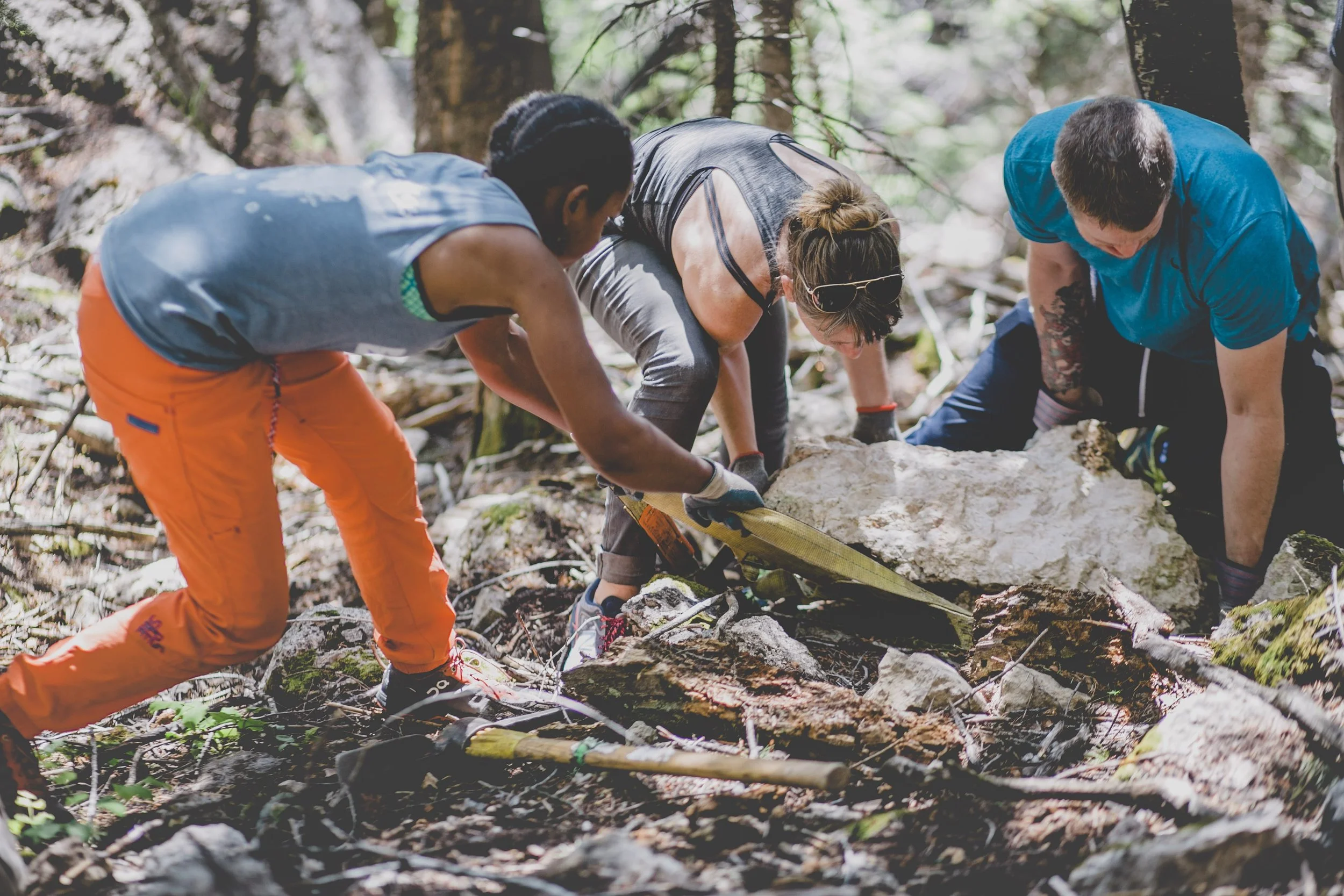Climbers are more than just climbers. We’re hikers, mentors, guides, trail-builders, Leave-No-Tracers, and so many other things—including conservationists.
From the days of hobnailed boots, hemp ropes, and hip belays, protecting the land has been a core value of climbers. It’s why climbers were at the heart of the effort to pass the Wilderness Act, establishing the means to protect wide swaths of America’s wildlands. It’s why Access Fund sued the federal government to defend the irreplaceable rock art, dwellings, and artifacts in Bears Ears National Monument. And it’s why climbers have volunteered tens of thousands of hours all across the country building trails, picking up garbage, and stewarding public lands.
Mt. Lemmon in southern Arizona. Ancestral lands of O’odham Jeweḍ, Ndee/Nnēē:, Sobaipuri, and Hohokam. © Eric Fallecker
Climbers have played a critical role in the conservation movement since its inception, protecting millions of acres from coast to coast. As we look to the future, we must continue to embrace this conservation legacy. We must be willing to tackle the big environmental challenges of our time in order to protect the outdoor climbing experience and the lands we love.
What's at Stake
Climbers have a front-row seat to what’s at stake when the environment is threatened. A hawk’s call echoing through the valley, the rich ecosystem of an old growth forest, rock art that reminds us that Indigenous people have been caring for these places since time immemorial. Without intentional efforts to protect them, the treasures that make these landscapes and the climbing experience so special can disappear in the blink of an eye.
Without intentional efforts to protect them, the treasures that make these landscapes and the climbing experience so special can disappear in the blink of an eye.
Every day, cash-ready developers swoop in and gobble up more open spaces. Public lands are under constant threat of damage from oil and gas extraction. Protected open spaces are dwindling every year, and yet more people than ever are getting out on the land, putting even more pressure on these fragile landscapes. And climate change threatens to push everything over the edge.
Conservation in Action
Climbers are leading the charge in conserving, restoring, and protecting climbing areas across the country—often assuming the conservation mantle for lands where no one else is willing or able to step up. And we are playing a critical role in campaigns to protect the landscapes and ecosystems that we all cherish.
Climbers moving stone during a trail day, Ten Sleep Canyon, Wyoming. Ancestral lands of Eastern Shoshone, Apsáalooke (Crow), Tséstho’e (Cheyenne), and Očhéthi Šakówiŋ. © Kris Ugarizza
At Access Fund, our job is to make sure that climbing advocates like you are the most effective conservationists you can be—whether that's amplifying your voice to lawmakers in Washington, D.C., helping your local community buy a threatened climbing area, or bringing in professional trail and restoration crews to help rehabilitate your backyard crag.
How Climbers Are Making a Difference
Mobilizing to Protect Public Lands
In the last two years alone, climbing advocates have influenced hundreds of policy decisions to protect America’s public lands. By plugging into Access Fund’s action alert network, more than 10,000 climbers were able to quickly speak up and influence lawmakers in Washington, D.C., and policymakers at parks and forests across the country. Climbers have a powerful story to tell, and when we speak up, government officials listen.
Buying & Conserving Threatened Climbing Areas
Buying a threatened climbing area doesn’t just protect climbing access—it also protects the land and the plants and animals that call it home. Over the last 30 years, Access Fund has helped climbers purchase and protect over 18,000 acres of land across the country. That’s 18,000 football fields worth of forest, streams, mountains, desert, and cliff line that will never become a strip mall, a sand mine, or an office park. These purchases protect the natural habitat of native plants and animals, promote climate resiliency, and give climbers the opportunity to safeguard the land against future environmental threats.
Restoring Climbing Areas
Any time humans are out on the land there will be environmental impact, and climbers are no exception. But we now have the means and expertise to manage these impacts so that the landscapes we love can thrive—but we have some catch-up work to do. Access Fund’s Conservation Teams are working with local climbing communities across the country to rehabilitate popular climbing areas and equip them with smart recreation infrastructure that keeps climbers concentrated to areas where they’ll have minimal impact. This technical trail building and conservation work is designed to set climbing areas up for long-term sustainable access that protects the environment.
How You Can Help
We’ve got climbers covered on the big stuff—buying and conserving threatened climbing areas, professional crag restoration, and mobilizing the community on policy threats—all you have to do is plug into this work. But you can make a big difference, every time you climb, by putting a few simple conservation strategies into practice. The Climber’s Pact is a great place to start. Sign the pact today to pledge your commitment to conserving the climbing environment.


